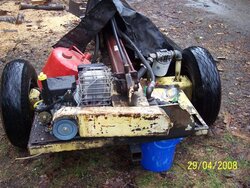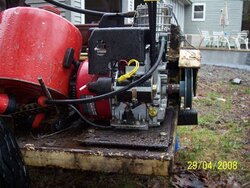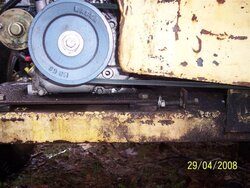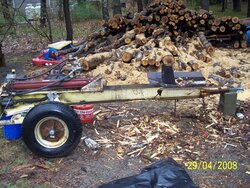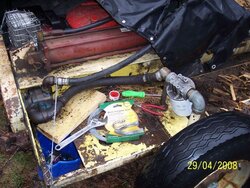- Feb 10, 2006
- 286
Hello, 2 problems and looking for input on possible causes and fixes.
1. I have some hydraulic fluid seeping from my intake port at my pump. It has a steel 90 degree elbow that has male threads going into the port and is connected to my hose from the reservoir. It seeps to the tune of about 4 oz every 2-3 hours. I cannot tighten it much more because it wont do another whole turn to come around and accept the hose. Can I use teflon tape or something to make the fit tighter?
2. My engine is mounted on a thick steel plate and then the plate is bolted to the splitter frame. The engine is an 8 hp B&S;Intek IC horizontal shaft. The engine turns a 4" pulley which runs a belt to turn the pump pulley. The engine has been vibrating so much that the muffler brackets have broken off the engine and the shroud bolts have needed tightening a few times. I am worried about the amount af vibration and my engines longgevity.
When I tighten the belt it tends to get very hot and gives off a burning smell under heavy load, when I loosen it a bit is slaps an inch or so. Could the belt system be causing a-lot of the vibration? Would a direct mount system decrease some of that? Is there a way to mount the engine to absorb some vibration?
1. I have some hydraulic fluid seeping from my intake port at my pump. It has a steel 90 degree elbow that has male threads going into the port and is connected to my hose from the reservoir. It seeps to the tune of about 4 oz every 2-3 hours. I cannot tighten it much more because it wont do another whole turn to come around and accept the hose. Can I use teflon tape or something to make the fit tighter?
2. My engine is mounted on a thick steel plate and then the plate is bolted to the splitter frame. The engine is an 8 hp B&S;Intek IC horizontal shaft. The engine turns a 4" pulley which runs a belt to turn the pump pulley. The engine has been vibrating so much that the muffler brackets have broken off the engine and the shroud bolts have needed tightening a few times. I am worried about the amount af vibration and my engines longgevity.
When I tighten the belt it tends to get very hot and gives off a burning smell under heavy load, when I loosen it a bit is slaps an inch or so. Could the belt system be causing a-lot of the vibration? Would a direct mount system decrease some of that? Is there a way to mount the engine to absorb some vibration?



